Abstract
Pulmonary virus infections predispose to bacterial infections in the lung. The mechanism of this effect was studied by quantitative comparison of the effects of airborne acute viral infection on pulmonary transport vs. in situ bactericidal mechanisms in mice. Animals infected by aerosol with 104 TCID50 of Sendai virus developed pathologic pulmonary changes of interstitial pneumonitis, bronchial epithelial desquamation, and peribronchial mononuclear cell infiltration 7 days later. At that time, the mice were challenged with an aerosol of viable 32P-labeled Staphylococcus aureus. Pulmonary bactericidal activity and physical transport by the lung were determined by the determination of viable staphylococcal and 32P radiotracer counts respectively at 4, 24, 48, and 72 hr after bacterial challenge. Infected mice showed a significant decrease from normal in the rate of reduction of viable bacterial counts in the first 4 hr after challenge followed by a proliferation of the staphylococci. By contrast, radiotracer removal rates at 4 and 24 hr were similar in infected and noninfected mice. There was a small but significant retention of 32P in the lungs of the infected animals at the later periods. These data demonstrate that bacterial multiplication associated with virus infection of lungs is related to defects in in situ bactericidal (phagocytic) mechanisms rather than transport mechanisms of the lung, despite histologic evidence of extensive destruction of bronchial-ciliated epithelium.
Full text
PDF
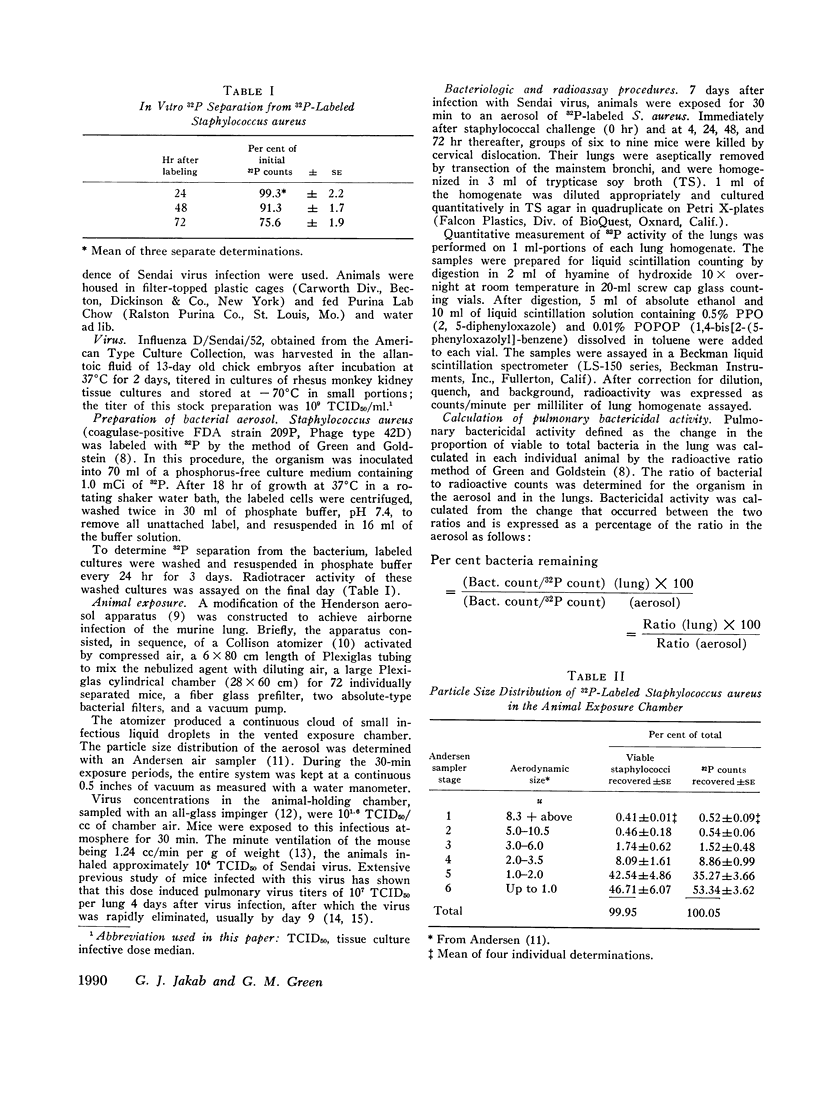
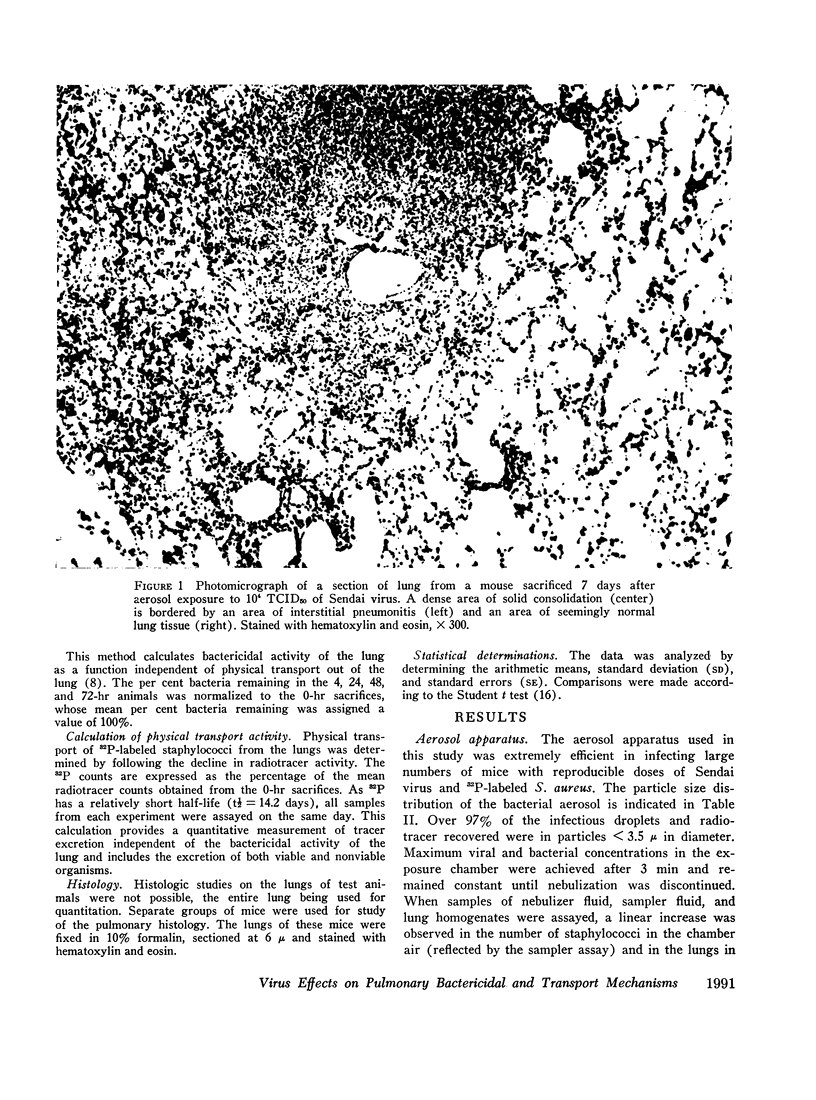
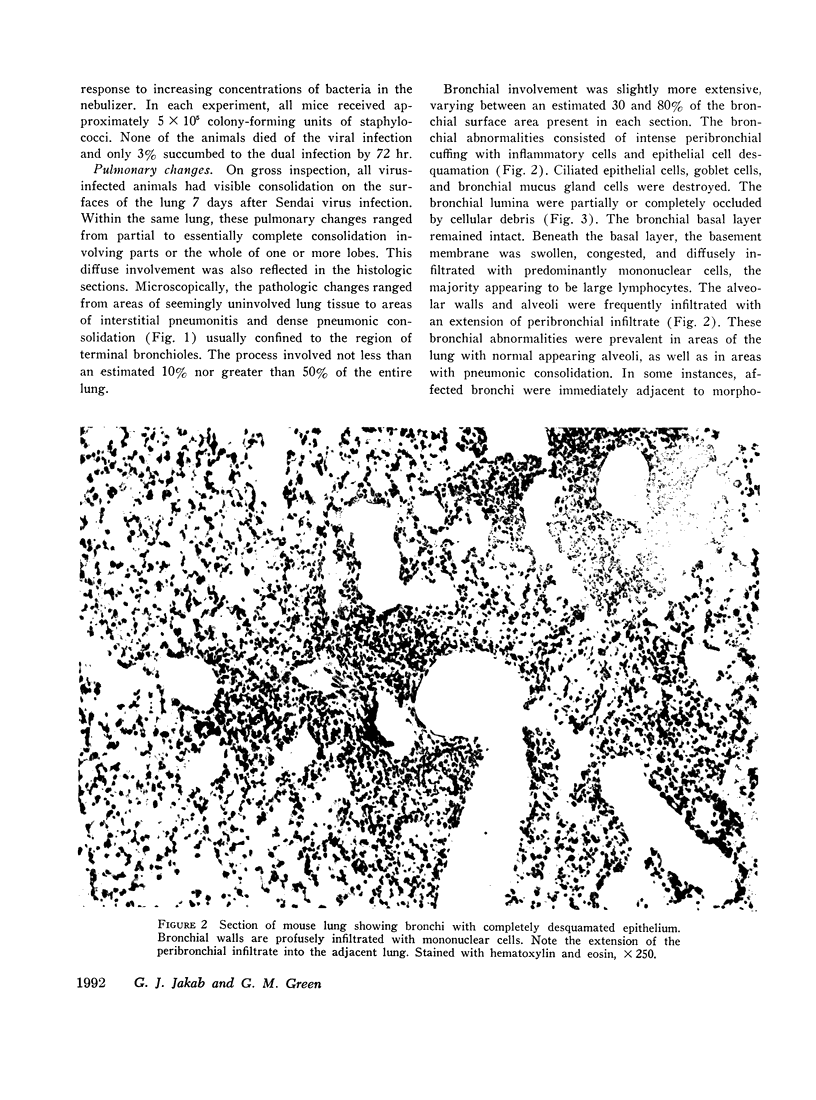
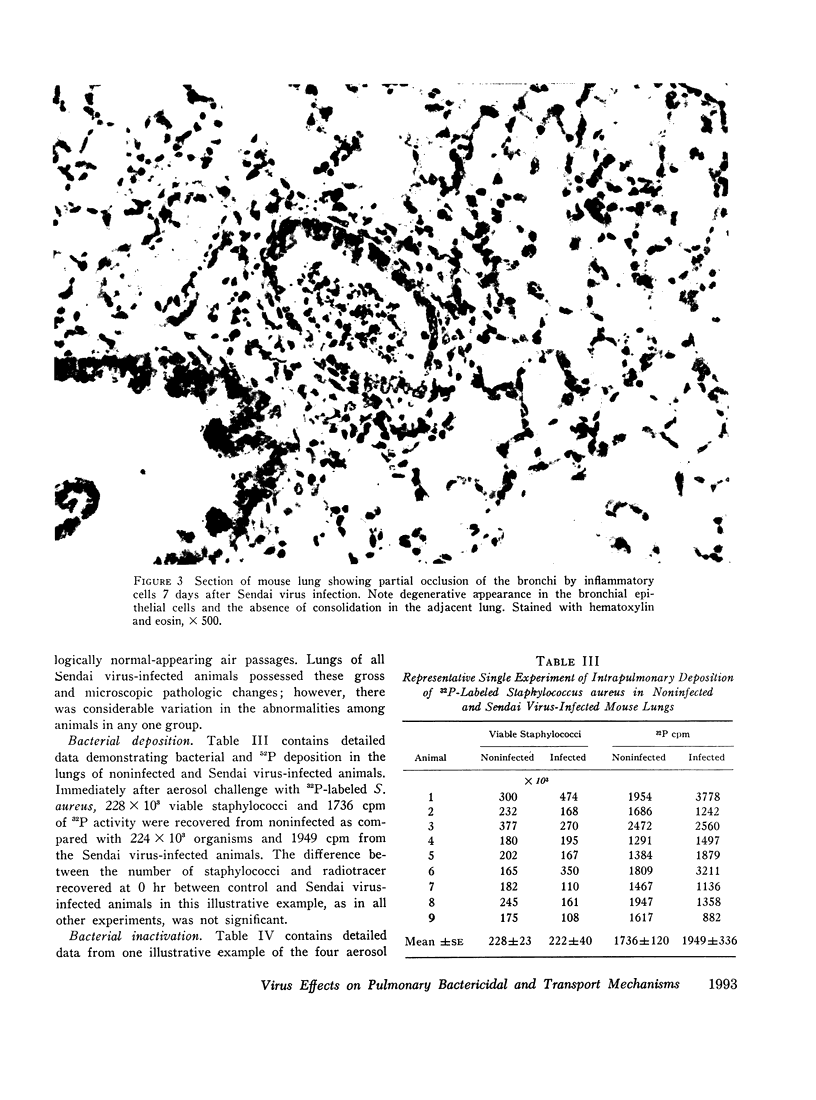
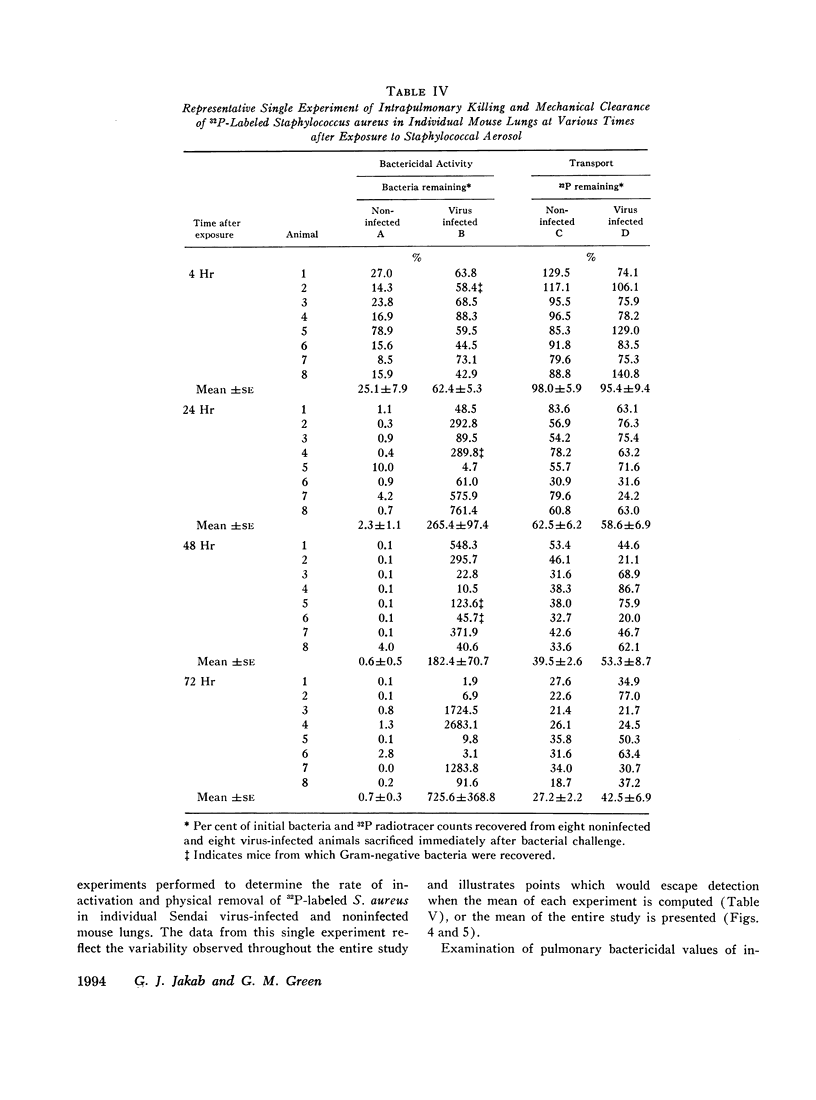
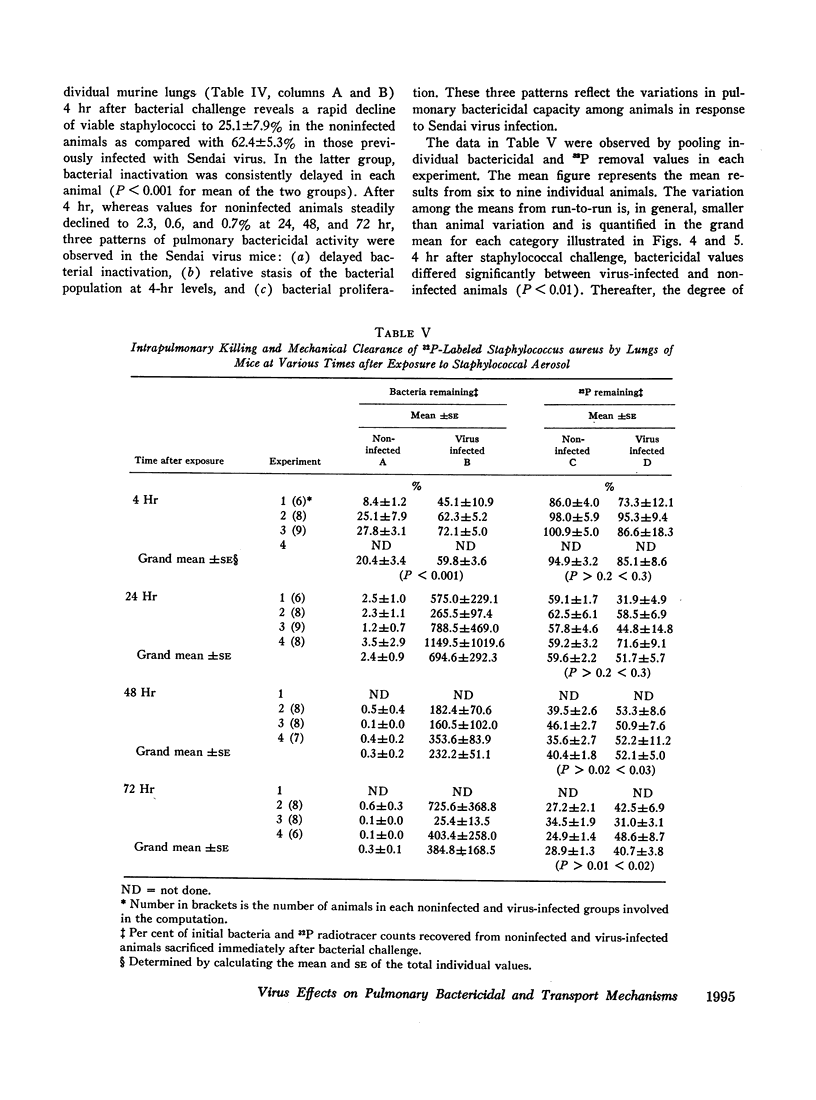
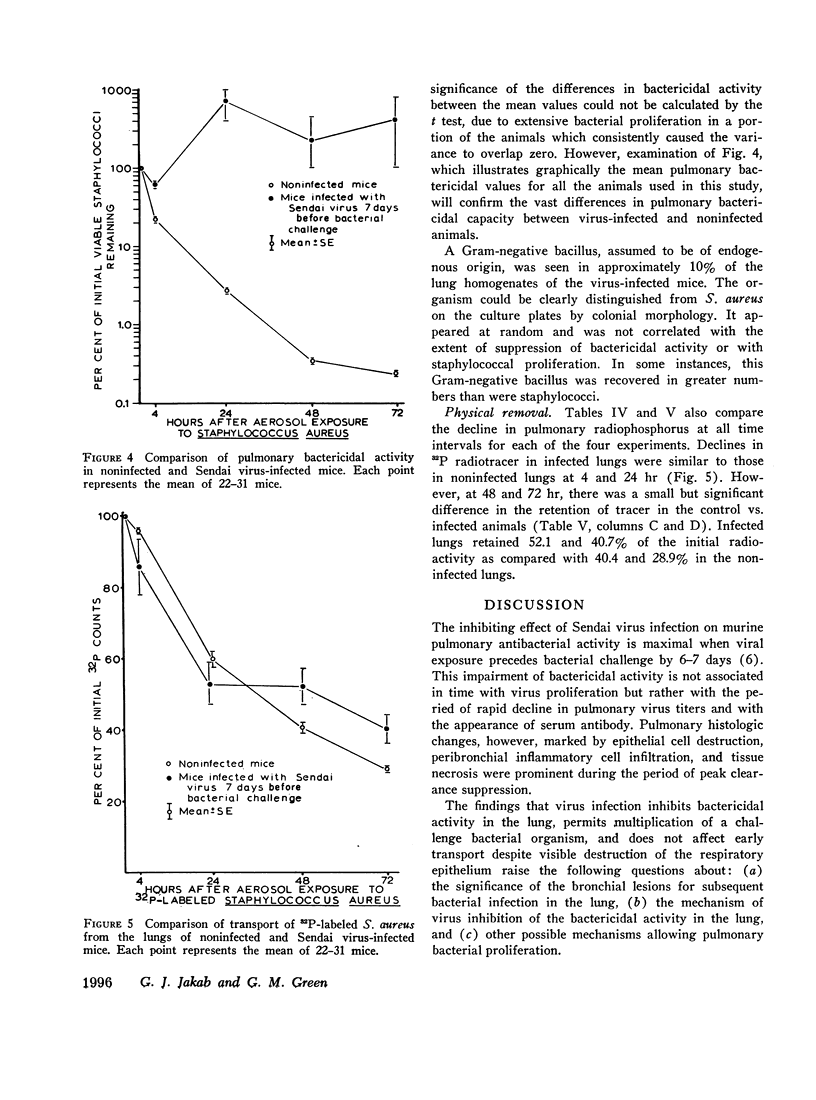
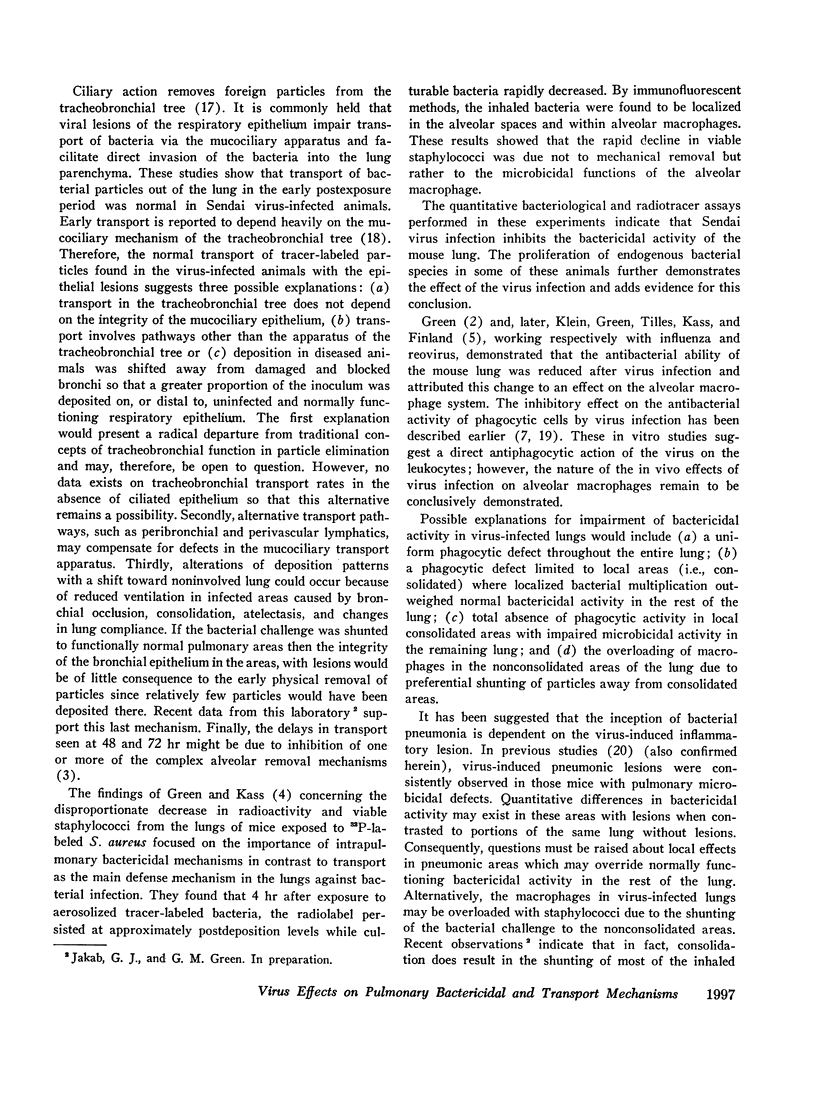
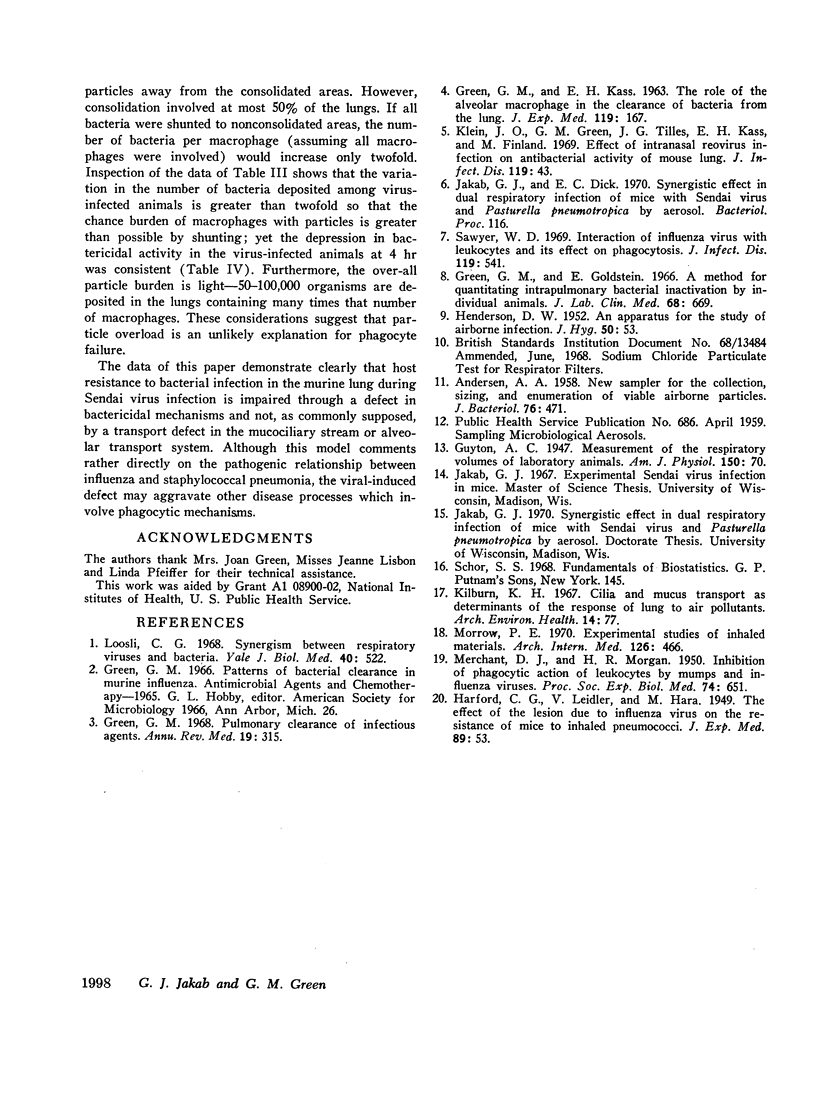
Images in this article
Selected References
These references are in PubMed. This may not be the complete list of references from this article.
- ANDERSEN A. A. New sampler for the collection, sizing, and enumeration of viable airborne particles. J Bacteriol. 1958 Nov;76(5):471–484. doi: 10.1128/jb.76.5.471-484.1958. [DOI] [PMC free article] [PubMed] [Google Scholar]
- GREEN G. M., KASS E. H. THE ROLE OF THE ALVEOLAR MACROPHAGE IN THE CLEARANCE OF BACTERIA FROM THE LUNG. J Exp Med. 1964 Jan 1;119:167–176. doi: 10.1084/jem.119.1.167. [DOI] [PMC free article] [PubMed] [Google Scholar]
- Green G. M., Goldstein E. A method for quantitating intrapulmonary bacterial inactivation in individual animals. J Lab Clin Med. 1966 Oct;68(4):669–677. [PubMed] [Google Scholar]
- Green G. M. Pulmonary clearance of infectious agents. Annu Rev Med. 1968;19:315–336. doi: 10.1146/annurev.me.19.020168.001531. [DOI] [PubMed] [Google Scholar]
- HENDERSON D. W. An apparatus for the study of airborne infection. J Hyg (Lond) 1952 Mar;50(1):53–68. doi: 10.1017/s0022172400019422. [DOI] [PMC free article] [PubMed] [Google Scholar]
- Kilburn K. H. Cilia and mucus transport as determinants of the response of lung to air pollutants. Arch Environ Health. 1967 Jan;14(1):77–91. doi: 10.1080/00039896.1967.10664699. [DOI] [PubMed] [Google Scholar]
- Klein J. O., Green G. M., Tilles J. G., Kass E. H., Finland M. Effect of intranasal reovirus infection on antibacterial activity of mouse lung. J Infect Dis. 1969 Jan;119(1):43–50. doi: 10.1093/infdis/119.1.43. [DOI] [PubMed] [Google Scholar]
- Loosli C. G. Synergism between respiratory viruses and bacteria. Yale J Biol Med. 1968 Apr-Jun;40(5-6):522–540. [PMC free article] [PubMed] [Google Scholar]
- MERCHANT D. J., MORGAN H. R. Inhibition of the phagocytic action of leucocytes by mumps and influenza viruses. Proc Soc Exp Biol Med. 1950 Jul;74(3):651–653. doi: 10.3181/00379727-74-18005. [DOI] [PubMed] [Google Scholar]
- Morrow P. E. Experimental studies of inhaled materials. A basis for respiratory models. Arch Intern Med. 1970 Sep;126(3):466–470. [PubMed] [Google Scholar]
- Sawyer W. D. Interaction of influenza virus with leukocytes and its effect on phagocytosis. J Infect Dis. 1969 Jun;119(6):541–556. doi: 10.1093/infdis/119.6.541. [DOI] [PubMed] [Google Scholar]





